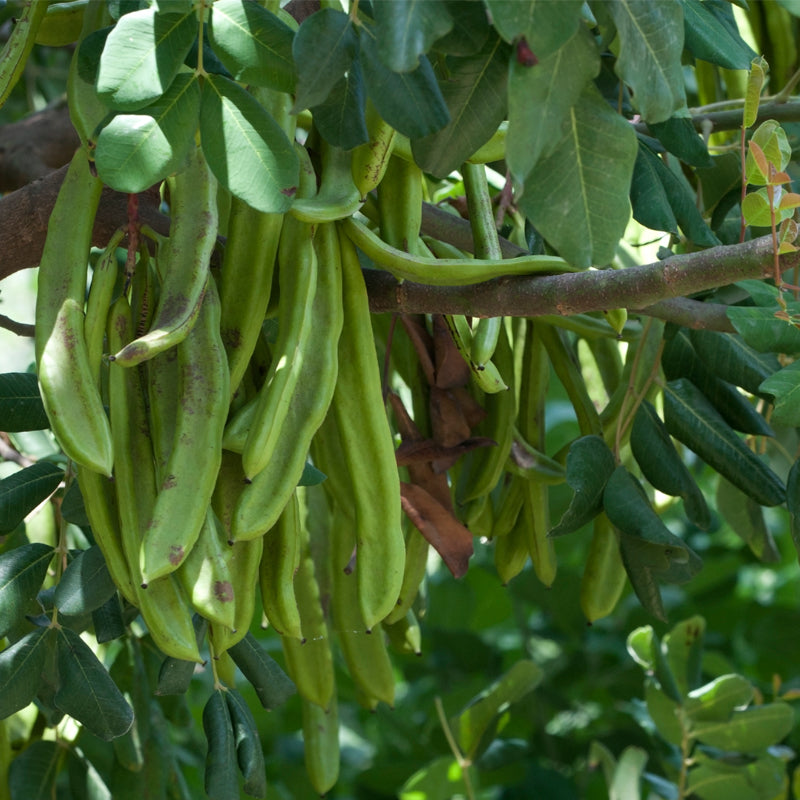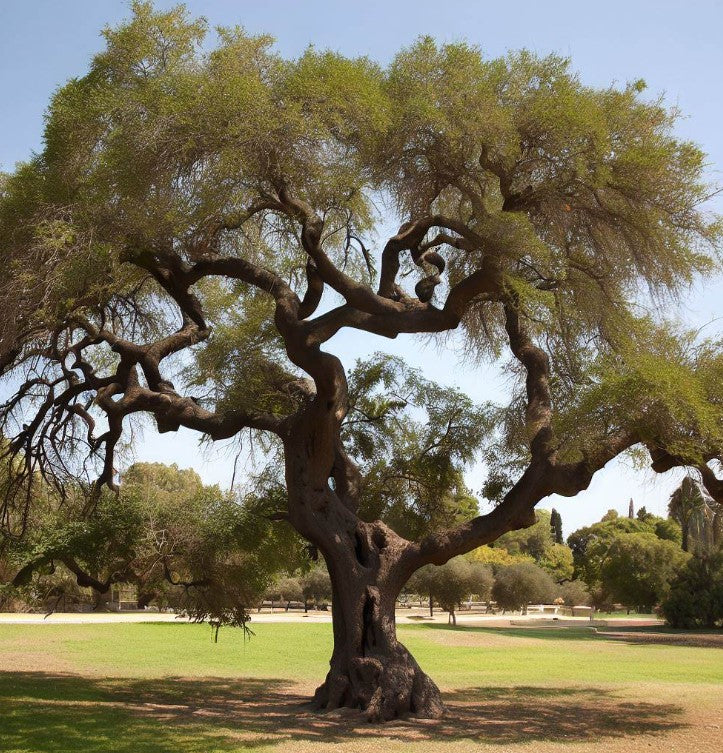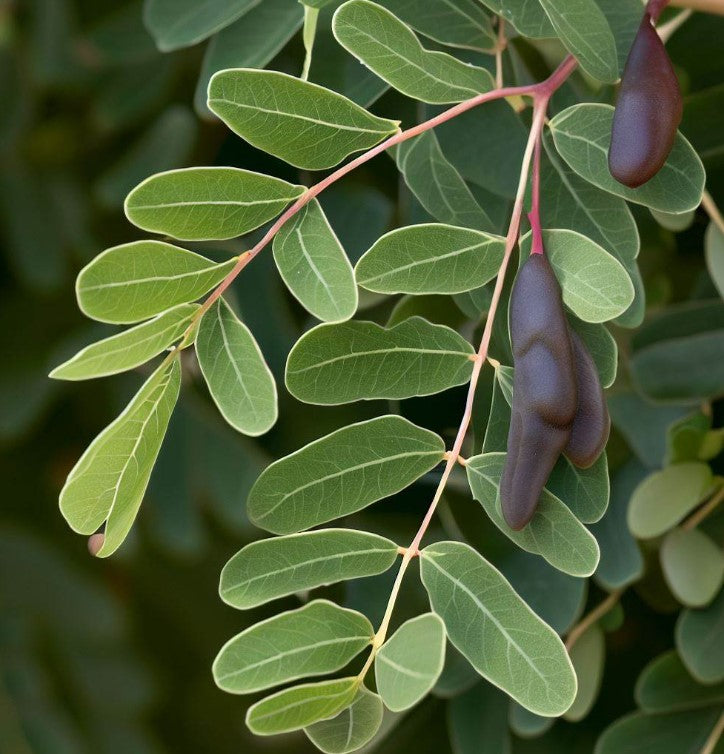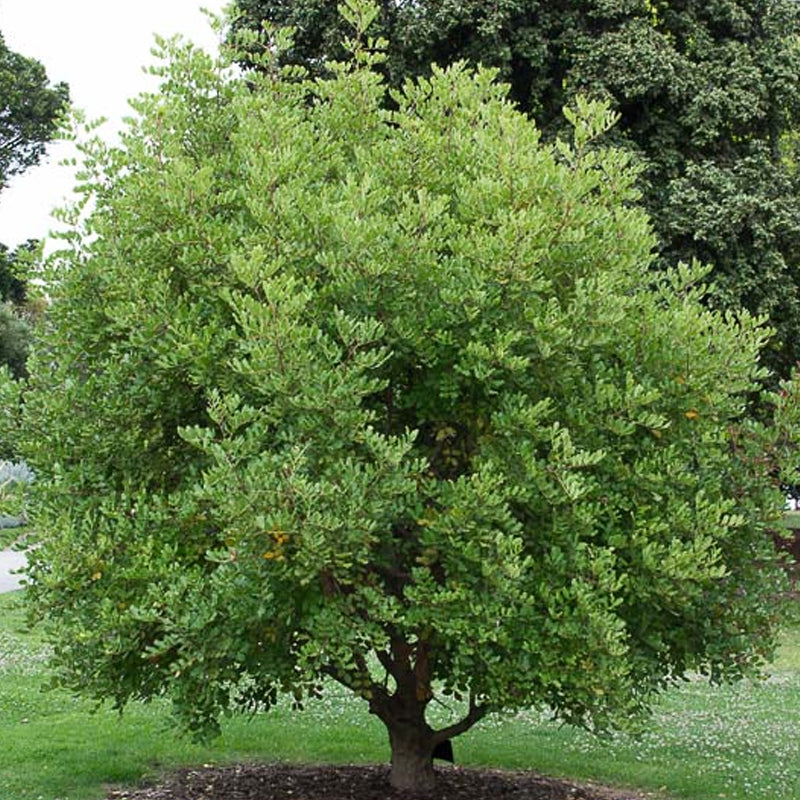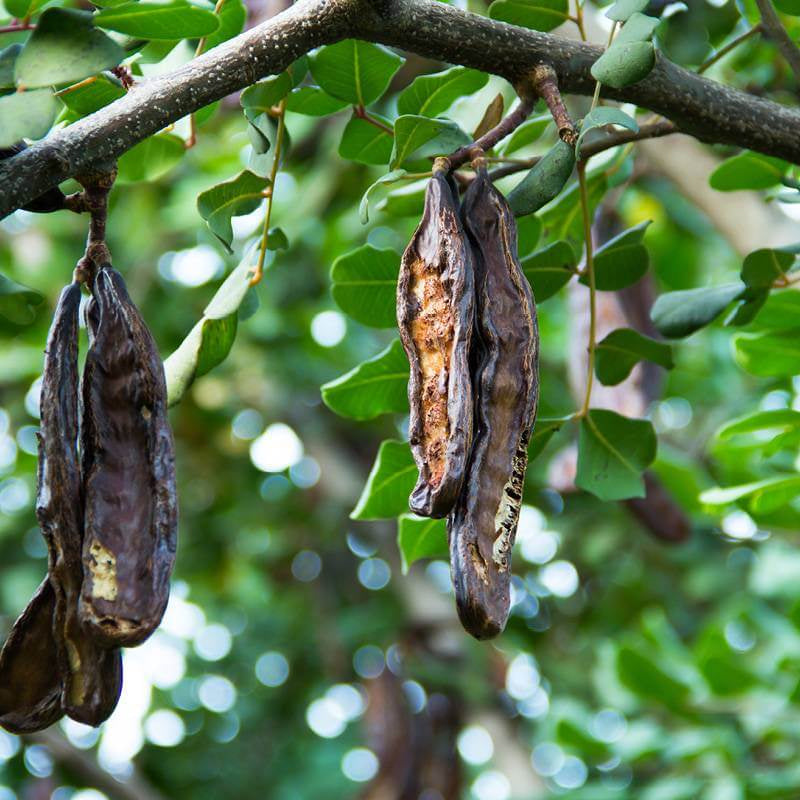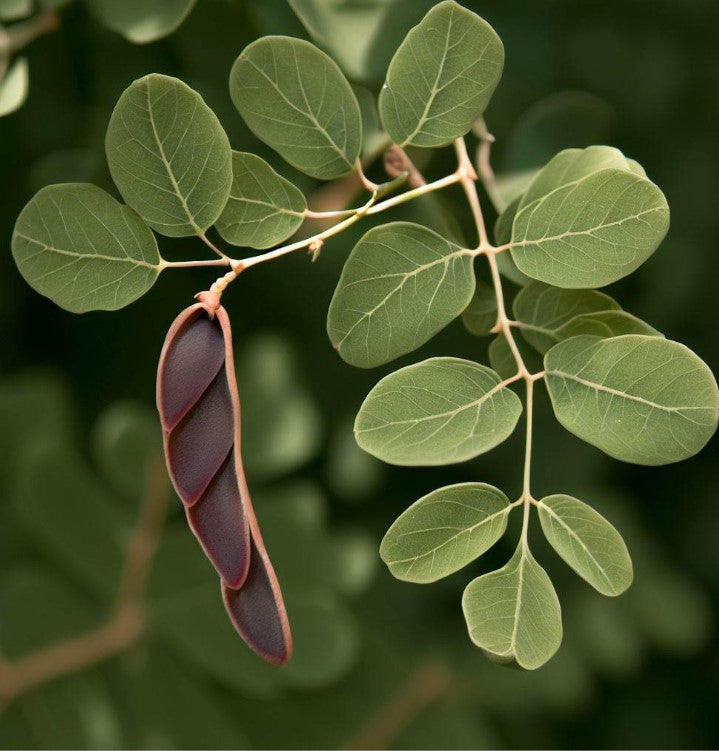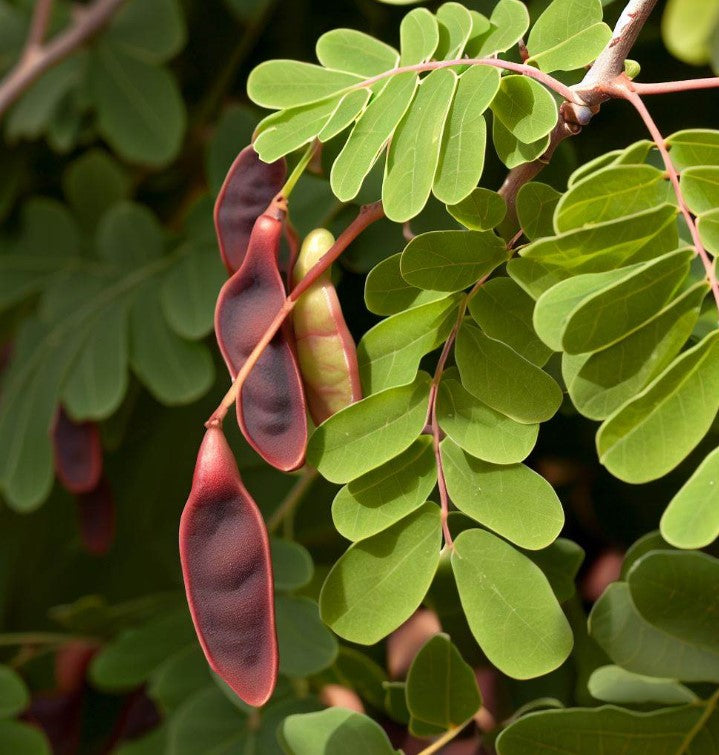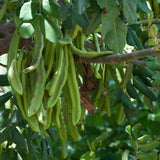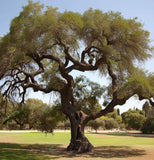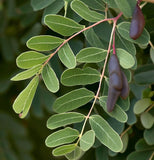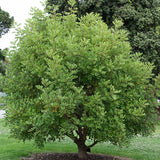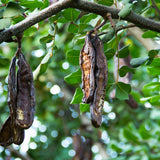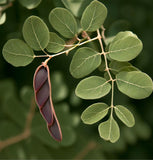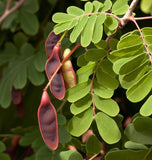Ceratonia siliqua (Carob Tree, Saint John's Bread, St. John's Bread)
Ceratonia siliqua (Carob Tree, Saint John's Bread, St. John's Bread) is an evergreen tree native to the Mediterranean region and parts of the Middle East. The Carob tree is a medium-sized tree that can grow up to 30 to 40 feet (9 to 12 meters) in height. It has a dense, rounded crown and a sturdy trunk with a rough, deeply furrowed bark. The leaves are dark green, glossy, and pinnately compound, consisting of several leaflets. The leaflets are oval-shaped and leathery in texture.
Flowers and Fruits: The Carob tree produces small, inconspicuous flowers that are typically grouped into clusters. The flowers are either male or female, with both types usually found on the same tree. The male flowers are yellow and cylindrical, while the female flowers are smaller and have a greenish color. The tree is pollinated by insects. The female flowers develop into long, bean-like pods known as carob pods. The mature pods are dark brown and can reach a length of 4 to 10 inches (10 to 25 centimeters). Each pod contains several seeds surrounded by a sweet, edible pulp.
Habitat and Range: Carob trees are well adapted to Mediterranean climates and are often found in coastal regions with mild, rainy winters and hot, dry summers. They thrive in well-drained soils and are tolerant of drought and salt spray. The tree has been cultivated in various parts of the world, including regions with similar climatic conditions.
Uses: Carob pods have been used for centuries as a food source and for various purposes. The pulp of the carob pods, often referred to as carob powder or locust bean gum, is sweet and can be used as a natural sweetener or flavoring agent. It is often used as a substitute for chocolate and cocoa powder due to its unique taste. Carob powder is also used in the production of food products such as candies, baked goods, and beverages. Additionally, the wood of the Carob tree is hard and durable, making it suitable for woodworking and crafting.
Ecological Importance: Carob trees provide habitat and food for various wildlife, including birds and insects. The sweet pulp of the carob pods attracts animals that help disperse the seeds. The tree's extensive root system helps prevent soil erosion in coastal areas.
Cultural Significance: Carob has a long history of traditional use and cultural significance. It has been cultivated for thousands of years and is mentioned in ancient texts. In some cultures, carob pods are associated with celebrations and festivals, and carob-based dishes are part of traditional cuisine.
Botanical Name : Ceratonia siliqua
Common Name : Carob
Height : 50 ft
Spread : 40 ft
Germination Info : Seed requires a scarification prior to sowing to break down the hard seed coat
Hardiness zone : 9- 11
Average seed per ounce : Approx. 125

